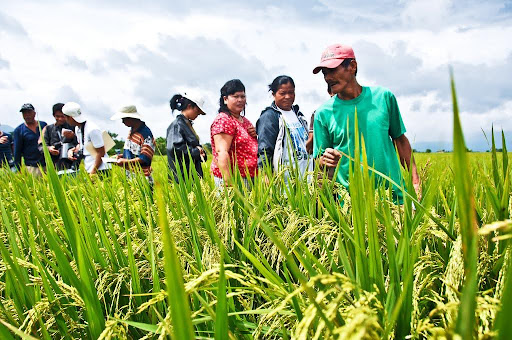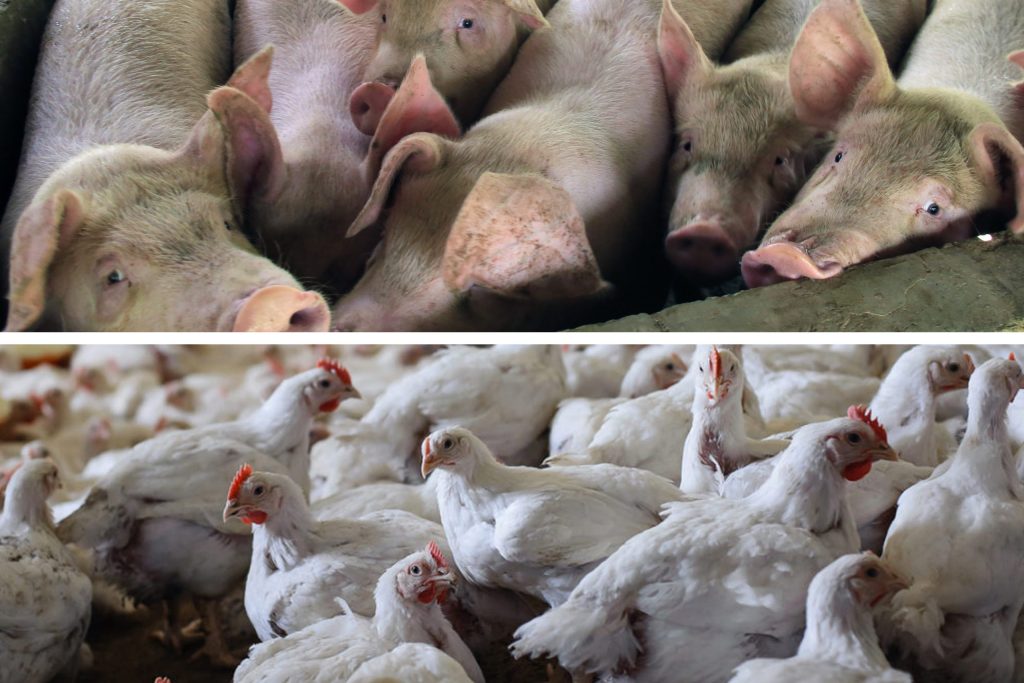Examine the factors driving the Q2 surge in fish catches, the unexpected rise in prices, and the impact of the recent oil spill crisis on the Philippine fisheries sector, including ongoing response efforts.

Surge in Fish Catch Volumes in Q2
On August 1, 2024, the Philippine Fisheries Development Authority (PFDA) reported a significant increase of 54.10% in the volume of fish caught and landed at regional fish ports (RFPs), rising from 121,062.55 metric tons (MT) in the second quarter (Q2) of 2023 to 186,557.96 MT in Q2 2024. Quarter-on-quarter, fish volumes increased by 38.45%, from 134,746.84 MT in the first quarter of this year. The average daily volume of fish unloaded in Q2 also rose by 38.45%, from 1,480.73 MT in 2023 to 2,050.09 MT in 2024.
The PFDA attributed these positive trends to the opening of various fishing grounds, resulting in RFPs servicing 19,619 vessels and 13,665 clients and port users throughout Q2 2024. The significant increase in fish catch volumes at RFPs indicates enhanced fishing opportunities and income for fisherfolk, contributing to their economic stability while ensuring a steady supply of fish in the market.
Fish Price Surge Amid Increased Catch Volumes
Despite the significant increase in fish catch volumes in Q2 2024, the fisheries industry experienced an unexpected rise in fish prices, particularly for round scad or galunggong. On June 26, 2024, the group Samahan ng Industriya ng Agrikultura (SINAG) questioned the increase in the price of galunggong and other fish despite the sufficient supply reported by the PFDA. SINAG noted that in Metro Manila, the retail prices of galunggong increased significantly from Php 160–260 per kilogram (kg) to Php 180–280 per kg in the last week of June. SINAG Chairperson Rosendo So expressed that the price of galunggong should ideally remain around Php 180–200 per kg, suggesting that the price increase was unwarranted. Data from the Department of Agriculture (DA)’s weekly price monitoring revealed that prices of fish such as galunggong and sardines tend to increase by the end of the month. This trend was observed from May to July.
The Bureau of Fisheries and Aquatic Resources (BFAR) attributed the recent price surge in galunggong to rains that have disrupted fishing activities and impacted the overall supply chain contributing to the increase in fish prices. Despite increased catch volumes, market instability is evident, as consumers faced higher costs and fishermen encountered income uncertainty due to price volatility. To address these challenges, stakeholders need to monitor market trends and adapt strategies to manage fluctuations and ensure financial stability.
Oil Spill Crisis Impacts Fishing Operations and Market
On July 25, 2024, the marine tanker MT Terra Nova sank off Limay, Bataan, spilling 1,494 MT of industrial fuel. Despite containment efforts hindered by strong winds and rough seas, the spill began affecting coastal towns in Cavite, including Tanza, Ternate, Naic, Cavite City, Rosario, and Noveleta, by July 29, 2024. The disaster impacted around 28,373 fisherfolk and 5,810 fishing boats, which prompted urgent calls for government intervention from the group Pambansang Lakas ng Kilusang Mamamalakaya ng Pilipinas (Pamalakaya).
On August 1, 2024, Cavite Governor Jonvic Remulla declared a state of calamity and imposed a no-catch zone for fish and shellfish as estimated damages reached Php 1 billion. Relief efforts were underway, including fuel subsidies and aid from the DA, while the Philippine Coast Guard (PCG) continued recovery operations. To prevent food poisoning, Senate Majority Leader Francis Tolentino urged consumers to avoid seafood from affected coastal areas due to detected petrochemical traces. As a precaution, the BFAR has banned seafood consumption from the towns of Noveleta and Rosario in Cavite.
The oil spill and warnings against consuming affected fish products will potentially disrupt the local market as consumer demand is expected to decrease due to health concerns, and local supply will diminish as fishing operations are halted. Meanwhile, the demand for alternative sources of protein such as chicken and other non-contaminated fish products may increase and lead to their higher market prices.
Further, this crisis may prompt investments in better spill mitigation technologies and stricter regulations to prevent future disruptions, highlighting the potential of innovative solutions such as the CocoFlexSorb, a technology developed by the Mindanao State University – Iligan Institute of Technology (MSU-IIT) under the Department of Science and Technology (DOST) – Niche Centers in the Regions for R&D (NICER) program Center for Sustainable Polymers (CSP).
CocoFlexSorb – Solution for Oil Spills
On May 11, 2023, MSU-IIT introduced “CocoFlexSorb,” a bio-based polyurethane foam developed under DOST’s NICER program and led by Dr. Hernando Bacosa. CocoFlexSorb boasts superior oil absorption capabilities for various oils, including light, vegetable, kerosene, engine, and bunker oil, and can be reused up to forty times without environmental harm. Field tests with the PCG in Occidental Mindoro in May 2023 showed promising results, indicating its potential as a future oil spill solution. During the event, DOST Secretary Renato U. Solidum Jr. highlighted the importance of ongoing R&D for technological advancements that benefit the environment and public health.
In response to the MT Terra Nova oil spill off Limay, Bataan on July 25, 2024, the potential of CocoFlexSorb as an effective oil spill mitigation tool has gained attention. The spill affected several coastal towns in Cavite, prompting urgent government intervention. DOST Balik Scientist Dr. Arnold Lubguban, project leader at MSU-IIT’s CSP, emphasized the need for eco-friendly, cost-effective solutions like CocoFlexSorb. Senator Tolentino and other officials stressed the importance of enhancing oil spill response technologies. The development and potential commercialization of CocoFlexSorb represent a crucial step in improving the country’s ability to manage oil spills and protect marine environments.
References: Cariaso, B. (2024, August 6). ‘Very thin oil sheens’ seen from 2 vessels — PCG. Philippine Star. Retrieved August 6, 2024 from https://www.philstar.com/headlines/2024/08/06/2375770/very-thin-oil-sheens-seen-2-vessels-pcg
Cariaso, B. & Sapnu, R. (2024, August 1). Oil spill: 8 Cavite towns declare calamity. Philippine Star. Retrieved August 1, 2024 from https://www.philstar.com/headlines/2024/08/01/2374609/oil-spill-8-cavite-towns-declare-calamity
Celario, S. (2024, June 26). Sirit-presyo ng GG, iba pang isda kinuwestyon ng agri group. Remate Online. Retrieved August 6, 2024 from https://remate.ph/sirit-presyo-ng-gg-iba-pang-isda-kinuwestyon-ng-agri-group/
Deña, C.B. (2024, July 31). Cavite fisherfolk struggling amid southwest monsoon, oil spill. Manila Bulletin. Retrieved July 31, 2024 from https://mb.com.ph/2024/7/30/cavite-fisherfolk-struggling-amid-southwest-monsoon-oil-spill
DOST. (2023, May 14). MSU-IIT’s CocoFlexSorb aids in oil spill cleanups. Business Mirror. Retrieved August 6, 2024 from https://businessmirror.com.ph/2023/05/14/msu-iits-cocoflexsorb-aids-in-oil-spill-cleanups/
Espiritu, R. & Barcelo, V. (2024, August 5). Oil spill’s damage to Cavite at P1b, smuggling angle probed. Manila Standard. Retrieved August 5, 2024 from https://manilastandard.net/news/national/314480288/25k-farmers-fisherfolk-in-calabarzon-affected-by-bataan-oil-spill-ocd.html
Flores, M. & Morales, N.J. (2024, July 25). Oil spill threatens Philippines capital after tanker capsizes. Reuters. Retrieved August 6, 2024 from https://www.reuters.com/world/asia-pacific/one-crew-missing-oil-spill-after-tanker-capsizes-off-philippines-2024-07-25/
Jose, K. (July 31, 2024) Tiu Laurel sa BFAR: Mga mangingisdang apektado ng Bataan oil spill tulungan. Remate Online. Retrieved July 31, 2024 from https://remate.ph/tiu-laurel-sa-bfar-mga-mangingisdang-apektado-ng-bataan-oil-spill-tulungan/
Miguel, J.A. (2024, July 31, 2024). BFAR says fish safe to eat despite oil spill. Manila Standard. Retrieved July 31, 2024 from https://www.manilatimes.net/2024/07/31/news/national/bfar-says-fish-safe-to-eat-despite-oil-spill/1960866
Pelonia, A. (2024, August 1). Fish unloaded in regional ports up 50% in Q2–PFDA. Business Mirror. Retrieved August 1, 2024 from https://businessmirror.com.ph/2024/07/31/fish-unloaded-in-regional-ports-up-50-in-q2-pfda/
Ramirez, C. (2024, August 1). Tolentino: Mag-ingat sa pagbili, pagkonsumo ng isda, shellfish sa mga apektado ng oil spill. Philippine Star. Retrieved August 1, 2024 from https://www.philstar.com/pilipino-star-ngayon/bansa/2024/08/01/2374503/tolentino-mag-ingat-sa-pagbili-pagkonsumo-ng-isda-shellfish-sa-mga-apektado-ng-oil-spill
Santos, J. (2024, August 2). BFAR prohibits consumption of fish, shellfish from 2 Cavite towns. Manila Bulletin. Retrieved August 2, 2024 from https://mb.com.ph/2024/8/2/bfar-prohibits-consumption-of-fish-shellfish-from-2-cavite-towns
Santos, J. (2024, July 31). Livelihood of 29,000 Cavite fishers at risk due to oil spill—fishers’ group. Manila Bulletin. Retrieved July 31, 2024 fromhttps://mb.com.ph/2024/7/30/livelihood-of-29-000-cavite-fishers-at-risk-due-to-oil-spill-fishers-group
Serquiñia, M. C. (2024, July 31). Expert calls for improved technology for oil spill response. GMA Integrated News. Retrieved August 1, 2024 from https://www.gmanetwork.com/news/scitech/science/915425/expert-calls-for-improved-technology-for-oil-spill-response/story/


